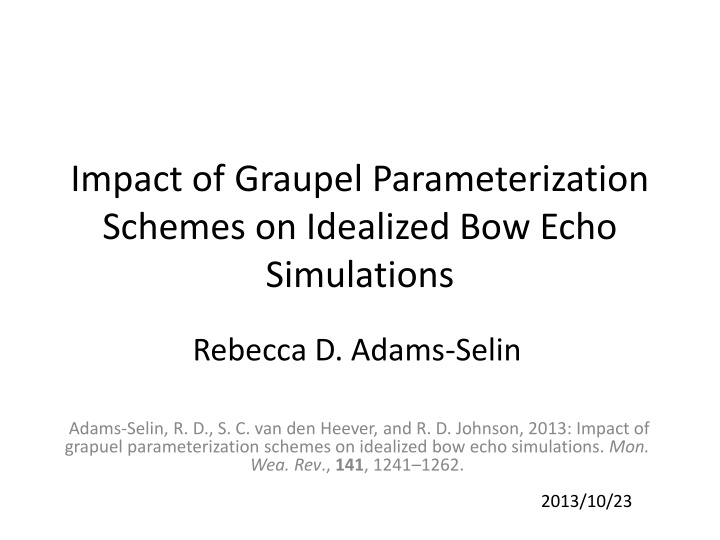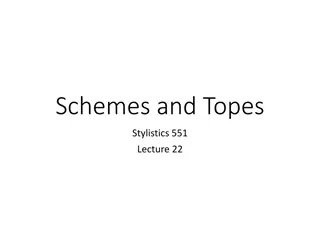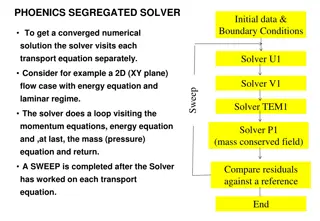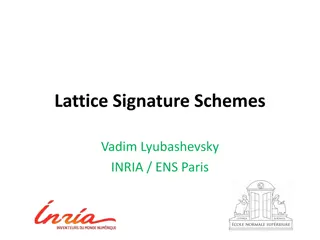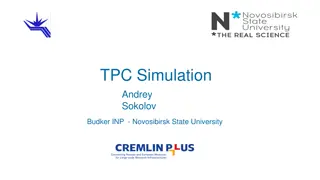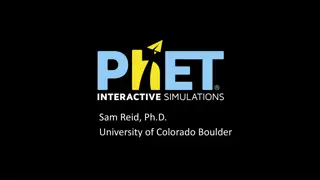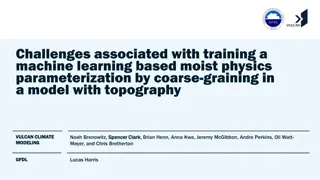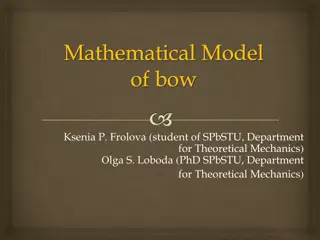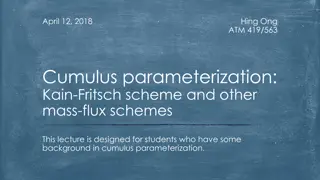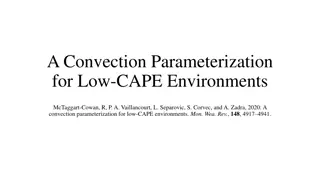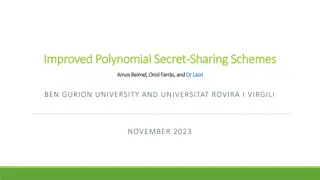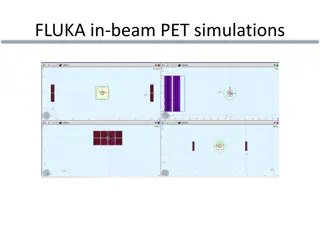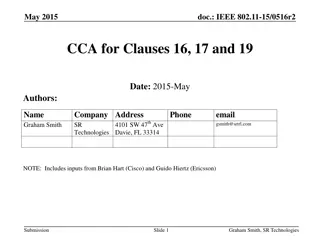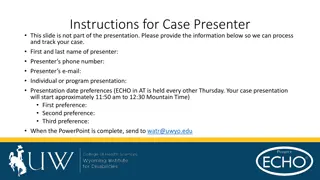Impact of Graupel Parameterization Schemes on Bow Echo Simulations
The study explores the impact of graupel parameterization schemes on idealized bow echo simulations, focusing on the role of the cold pool in shaping storm structure and longevity. Changes in microphysical characteristics, cold pool strength, and vorticity balance are examined using a cloud-resolving model. Results highlight the significance of microphysics in enhancing storm intensity and structure evolution, with implications for forecasting and understanding severe weather events.
Download Presentation

Please find below an Image/Link to download the presentation.
The content on the website is provided AS IS for your information and personal use only. It may not be sold, licensed, or shared on other websites without obtaining consent from the author.If you encounter any issues during the download, it is possible that the publisher has removed the file from their server.
You are allowed to download the files provided on this website for personal or commercial use, subject to the condition that they are used lawfully. All files are the property of their respective owners.
The content on the website is provided AS IS for your information and personal use only. It may not be sold, licensed, or shared on other websites without obtaining consent from the author.
E N D
Presentation Transcript
Impact of Graupel Parameterization Schemes on Idealized Bow Echo Simulations Rebecca D. Adams-Selin Adams-Selin, R. D., S. C. van den Heever, and R. D. Johnson, 2013: Impact of grapuel parameterization schemes on idealized bow echo simulations. Mon. Wea. Rev., 141, 1241 1262. 2013/10/23
Introduction A key component to the strength, structure, and longevity of bow echoes is the cold pool (Rotunno et al. 1988; Weisman 1992, 1993; Weisman and Rotunno 2005). a large effect on the shape and strength of the cold pool (Lin et al. 1983; Fovell and Ogura 1988; James et al. 2006) and hence the eventual storm structure, longevity, and development. The buoyancy gradient and the warm outflow from the updraft aloft increases, resulting in a strengthened midlevel low pressure perturbation (low-level microphysical cooling) . RTF (rear-to-front) flow to be easily transported to the surface, and enhance evaporation by entraining additional unsaturated air, further cooling the cold pool.
Introduction Changes in the microphysical characteristics cold pool and vorticity balance. The additional intensification of the updraft due to latent heat from freezing best simulations that include ice have resultant system front-to-rear flow (Nicholls 1987; Tao and Simpson 1989; Fovell and Ogura 1988; Szeto and Cho 1994) and realistic stratiform precipitation structure (Fovell and Ogura 1988). The cold pool strength due to cooling by melting a much narrower stratiform precipitation region, weaker midlevel buoyancy and pressure perturbation, and resulting weaker rear-inflow jet with the inclusion of hail (Yang and Houze 1995). A cloud-resolving model is used to examine the impacts of microphysics specifically on bow echoes. The sensitivity of new bowing frequency and intensity to changes in microphysical heating and cooling rates will be investigated.
a. Model description The Advanced Research Weather Research and Forecasting Model (ARW-WRF) V3.2.1 600 km dx = dy = 1km 50~350 400 km cold dam 0~200 72 stretched vertical levels Ptop = 100 hPa WRF Single-Moment 5- and 6-class scheme (WSM5 & WSM6) Initial time: 0000 UTC 13 Mar 2003 Integration length: 6 h Norman, Oklahoma (KOUN) @ 2003/03/13 0000UTC CAPE=3752 J kg-1
b. Model microphysics and experiment design Marshall and Palmer 1948 : the number of hydrometeors between : the distribution intercept : the slope : the mass-weighted mean terminal velocity : empirically determined coefficients
Results from hail-graupel comparison -0240 -0250 -0300 -0220
a. System-relative real-to-front flow V=21.4 ms-1 V=18.7 ms-1 values are averaged 5 km storm-relative line-normal winds V: the mean system speed V=16.7 ms-1 V=23.1 ms-1
b. Midlevel pressure and buoyancy perturbations Vertical motion (cm s-1) and pressure perturbation (hPa)
Hydrometeor mixing ratios (g kg-1) 0240 0250 0300 0220 cloud water and ice rain water snow cold pool
qc+qi rain water snow cold pool melting sublimation 25,40, & 50 dBZ
qc+qi rain water snow cold pool melting sublimation 25,40, & 50 dBZ
qc+qi rain water snow cold pool melting sublimation 25,40, & 50 dBZ
qc+qi rain water snow cold pool melting sublimation 25,40, & 50 dBZ
c. Microphysical effects on bowing 0240 0250 0300 0220
Cooling rates [K (5 min)-1] melting sublimation 25,40, & 50 dBZ Peak precipitation rate was more sensitive to hydrometeor fall speed than mean size. 0240 0250 0300 0220
d. Comparison to other studies Graupel-like is in contrast to Giolmore et al (2004a), van Weverberg et al. (2011, 2012b), and Morrison and Milbradt (2011), which found the hail system created more intense cold cools. The slow graupel fall speeds relatively of their fast hail fall speeds; lower CAPE of their study; higher deep-layer shear values Graupel-like agree with van den Heever and Cotton (2004), and Bryan and Morrison (2012), which have higher CAPE and weaker shear.
Results from removal of graupel class Graupel (WSM6) No graupel (WSM5) Graupel propagated faster speed than the no graupel
Graupel (WSM6) No graupel (WSM5)
Graupel (WSM6) No graupel (WSM5) qc+qi rain water snow cold pool melting sublimation 25,40, & 50 dBZ
Graupel (WSM6) No graupel (WSM5) qc+qi rain water snow cold pool melting sublimation 25,40, & 50 dBZ
Graupel (WSM6) No graupel (WSM5) qc+qi rain water snow cold pool melting sublimation 25,40, & 50 dBZ
No-graupel: with reduced freezing rates updrafts were weaker
Summary The effect of changes in microphysical cooling rates on bow echo generation, specifically through the connections among cold pool strength, rear-to-front flow, and convective updraft tilt. Hail-like: hydrometeors fall out of the updraft almost immediately (convective line) for little melting or evaporation; a minimal stratiform precipitation; convective line minimally updraft tilted (15 km). Graupel-like: hydrometeors were slower to fall for more melting and evaporation; a wide stratiform precipitation; farther rearward updraft tilted (25 km). WSM6: a stronger cold pool, the faster-falling graupel hydrometeors more quickly reached the melting level, result stronger midlevel pressure perturbation and rear-to-front flow.
